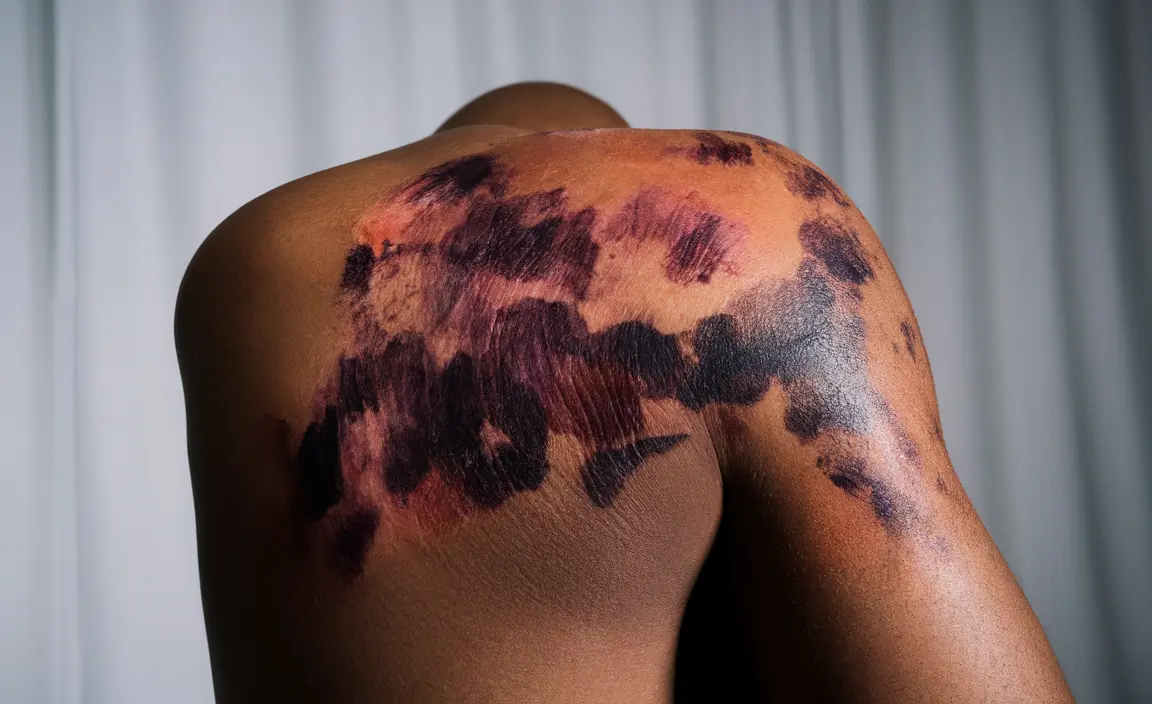Understanding how shingles appears and develops on Black skin is crucial for early detection and proper treatment. While the underlying virus and condition remain the same, the visual presentation of shingles can vary significantly on darker skin tones, making accurate recognition particularly important for proper diagnosis and timely medical intervention.
This comprehensive guide will help you understand the unique characteristics of shingles on Black skin, including early warning signs, diagnostic challenges, and the importance of prompt treatment to prevent complications.
Understanding Shingles and Its Appearance on Black Skin
Shingles, caused by the reactivation of the varicella-zoster virus, manifests differently on Black skin compared to lighter skin tones. On darker skin, the characteristic rash may appear darker, more subtle, or have different color variations that can make initial identification challenging.
Distinctive Features on Dark Skin
On Black skin, shingles typically presents with:
- Deeper purple or brown coloration instead of the typical red
- Hyperpigmented patches that may be harder to distinguish
- Subtle color changes that could be overlooked
- Varying degrees of skin discoloration
Early Warning Signs and Symptoms
Recognizing early symptoms is crucial for proper diagnosis and treatment. Before the visible rash appears, individuals may experience:
- Burning or tingling sensations in a specific area
- Sensitivity to touch
- Mild to severe pain along nerve pathways
- Occasional itching or numbness
Pre-Rash Symptoms
The initial phase of shingles often includes:
- Localized pain that may be mistaken for other conditions
- Flu-like symptoms in some cases
- Heightened skin sensitivity in the affected area
- General fatigue or malaise
Diagnostic Challenges and Solutions
Healthcare providers face unique challenges when diagnosing shingles on Black skin due to the different visual presentation. This often requires a more comprehensive approach to diagnosis, including:
- Detailed patient history
- Careful physical examination
- Assessment of symptom patterns
- Recognition of nerve distribution patterns
Treatment and Early Intervention
Early treatment is essential for managing shingles effectively and preventing complications. Key aspects of treatment include:
- Antiviral medications (most effective when started within 72 hours)
- Pain management strategies
- Proper skin care during healing
- Regular monitoring for potential complications
Frequently Asked Questions
How does shingles appear differently on Black and brown skin compared to lighter skin?
On Black and brown skin, shingles typically appears as deeper purple or brown patches rather than the red rash seen on lighter skin. The blisters may appear darker, and the overall presentation can be more subtle, making it crucial to pay attention to other symptoms like pain and sensitivity in the affected area.
What are the early signs and symptoms of shingles on dark skin that I should look for?
Early signs include burning or tingling sensations, specific areas of skin sensitivity, and pain along nerve pathways. Watch for subtle skin color changes, especially darker patches or areas that feel different from surrounding skin, even before visible blisters appear.
Why is shingles harder to diagnose in people with Black or brown skin?
Diagnosis can be more challenging because the characteristic redness and inflammation are less visible on darker skin tones. The subtle color changes and variations can make the rash less obvious, potentially leading to delayed diagnosis if healthcare providers aren't familiar with how shingles presents on dark skin.
How important is early treatment for shingles in preventing complications on dark skin?
Early treatment is crucial regardless of skin tone, but particularly important for preventing post-herpetic neuralgia and other complications. Starting antiviral medications within 72 hours of rash onset provides the best outcomes and reduces the risk of long-term complications.
Can the shingles rash on Black skin be mistaken for other skin conditions like eczema or dermatitis?
Yes, the appearance of shingles on Black skin can be mistaken for other conditions like eczema, dermatitis, or even allergic reactions. The key differentiating factors are the characteristic one-sided distribution of symptoms and the presence of nerve pain or burning sensations before the rash appears.




